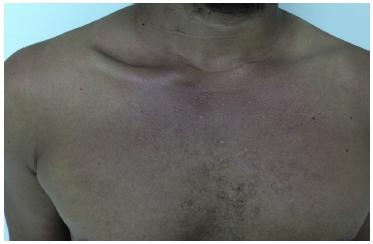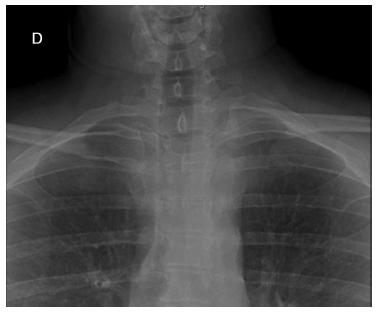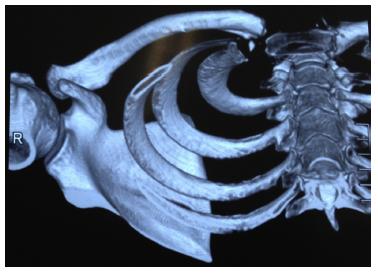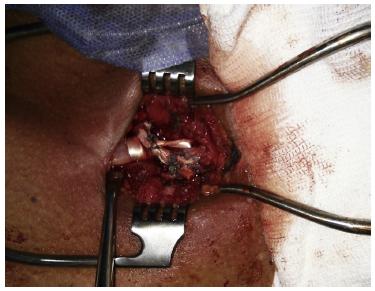Abstract
Sternoclavicular dislocations account for less than 5% of all dislocations of the scapular belt. Most cases of anterior dislocation of the sternoclavicular joint do not present symptoms. However, some patients may develop chronic anterior instability and remain symptomatic, and surgical treatment is indicated in these cases. There is a scarcity of reports in the literature relating to reconstruction using the long palmar tendon in cases of traumatic anterior instability. Although rare, these injuries deserve rapid diagnosis and efficient treatment in order to avoid future complications. The aim of this report was to report on a case of a motocross competitor who developed chronic traumatic anterior instability of the sternoclavicular joint and underwent surgical reconstruction using the autogenous long palmar tendon. The patient was a 33-year-old man with a history of anterior dislocation of the sternoclavicular subsequent to a fall during a maneuver in a motocross competition. Conservative treatment was instituted initially, consisting of use of a functional sling to treat the symptoms for 3 weeks, along with physiotherapeutic rehabilitation for 3 months. We chose to use a modification of the "figure of eight" technique based on the studies by Spencer and Kuhn. A longitudinal incision of approximately 10 cm was made at the level of the sternoclavicular joint. The graft from the ipsilateral long palmar tendon was passed through the orifices in the form of a modified "figure of eight" and its ends were sutured together. The patient was immobilized using an American sling for 4 weeks. After 6 months of follow-up, the patient no longer presented pain or instability when movement of the sternoclavicular joint was required. Minor discomfort and slight prominence of the sternoclavicular joint continued to be present but did not affect the patient's activities. Thus, the patient was able to return to racing 6 months after the operation. Our study presented a case of chronic anterior dislocation of the sternoclavicular joint that was successfully treated by using a modification of the "figure of eight" reconstruction technique. This technique was shown to be safe and effective, and it allowed the patient to fully return to his sports activities.
Keywords:
Dislocation; Tendon transfer; Shoulder









